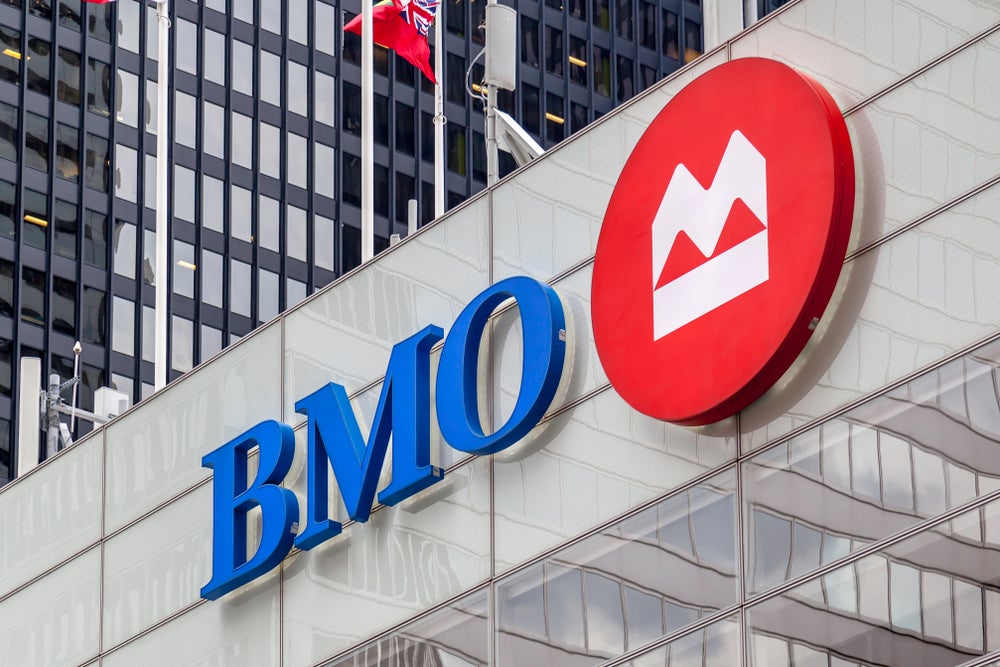France’s BNP Paribas looks set to emerge as a winner
from the financial crisis after its acquisition of Fortis Bank
enhanced its global reach. Now, the bank has revealed strategic
goals for its retail operations in the coming years, as it seeks to
build on its status as the eurozone’s biggest bank by deposits.
Dan Jones
reports.
BNP Paribas (BNPP) has unveiled a
comprehensive strategic plan for its newly-strengthened
international operations as it looks to build on its already
formidable market position across Europe and beyond.
BNPP, bolstered by the acquisition of
Benelux-based Fortis, which made it the largest bank in the
eurozone by deposits, believes its strong track record in
integrating mergers over the past decade will serve it well over
the next.
Though such claims have been widely and
arguably inaccurately put forward within the banking industry over
the past 18 months, BNPP has pointed to its recent successful
integrations. This is most notable in its purchase of Italian unit
BNL, which it said realised €550 million ($786 million) of
synergies versus an initially-announced target of €400 million.
According to BNPP, synergies from the Fortis
deal are expected to amount to €900 million by 2012, with €252
million of this figure expected to arise from improvements made
across the bank’s retail banking networks in Belgium, Luxembourg,
France, Italy and further afield. These adjustments will largely
focus on “optimising networks and making best use of technology,
such as CRM and card processing”.

How well do you really know your competitors?
Access the most comprehensive Company Profiles on the market, powered by GlobalData. Save hours of research. Gain competitive edge.

Thank you!
Your download email will arrive shortly
Not ready to buy yet? Download a free sample
We are confident about the unique quality of our Company Profiles. However, we want you to make the most beneficial decision for your business, so we offer a free sample that you can download by submitting the below form
By GlobalDataThe most obvious initial gains will be made in
Belgium and Luxembourg, but the bank has work to do if it is to
restore the tattered reputation of Fortis in its domestic
markets.
A network of 2,900 branches and ATMs coupled
with 1.3 million online banking users means BNPP is now, in its own
words, “a leader across all distribution channels” in Belgium.
However, a crucial facet of the new operation will be to reassure
customers the bank is now both in safe hands and still to an extent
“a Belgian bank”.
To this end, BNPP has committed to keeping key
decision centres in Belgium, as well as its more visible branding
commitment of taking the name ‘BNP Paribas Fortis’.
The importance of a name
During the rebranding in June last
year, BNP Paribas Fortis head of marketing for retail banking,
Franciska Decuypere, told RBI: “I think there is a very important
message in keeping the Fortis name. We thought about it and it
would have been easy to say simply go with BNP Paribas.
“It is a sign of respect from BNPP to the
local Belgian market, to the company and to its people to keep
Fortis and there are strengths to take from both banks,” Decuypere
added (see RBI 615).
But the bank also has ambitious plans for its
other markets.
Talking to RBI in late December, Peter
Vanderkerckhove, head of retail and private banking (Belgium) at
BNPP, said: “I think it is important to look at what BNPP is able
to do in its organisation. Because it has a very large platform it
was able to split national operations from international operations
and still keep enough of the knowledge coming through.”
‘Optimising networks’, as the bank termed it
at an investor day in December last year, will take on a number of
distinct forms. In Poland, the process will involve combining the
bank’s retail banking businesses into one integrated unit.

Having merged its Dominet Bank holding with
Fortis Bank Poland into one universal bank in August 2009 – the two
businesses have 259 branches and 400,000 customers between them –
BNPP plans to launch a new personal financial business from within
its retail bank, as well as deliver €25 million in synergies by
2010.
The process is reminiscent of the complicated
reorganisations of Polish operations being performed by European
banks at either end of the performance spectrum.
Belgium’s KBC, for example, announced on 4
January that its Polish subsidiary, Kredyt Bank, is to transfer its
consumer finance unit Zagiel to KBC as a precursor to a divestment
of the unit.
The bank’s aim is to move “away from the
stand-alone specialist model… and towards an integrated
bancassurance distribution model”. This will involve selling
consumer finance products via Kredyt Bank.
In November, meanwhile, Spain’s Santander
gained approval to purchase AIG’s retail banking business in
Poland, which it plans to integrate with its own consumer finance
operations to create a 250-outlet unified consumer finance
division.
But for BNPP, the process extends further than
just Poland. A new emerging markets unit will comprise the bank’s
activities in Central and Eastern Europe, the Mediterranean and
Turkey.
According to Vanderkerckhove, from a
customer’s point of view, the move represents an attempt to “avoid
the fractures in the service”.
Of particular importance to Vanderkerckhove,
given his twin responsibilities, is ensuring “the necessary time is
allocated to each client”.
|
Market Share |
|||
|
BNP Paribas domestic markets, September |
|||
|
Retail clients/entrepreneurs (m) |
Private clients |
Personal finance clients (m) |
|
|
France |
7.1 |
125,000 |
2.7 |
|
Italy |
2.6 |
14,000 |
2.4 |
|
Belgium |
3.6 |
94,000 |
0.5 |
|
Luxembourg |
0.3 |
25,000 |
n/a |
|
Source: BNP Paribas |
|||
He continued: “That way you can transport him
from the smaller segments, from retail into private banking – you
can really have a sliding scale where the client feels much closer
guarded and does not feel fractured each time he changes
service.”
The acquisition of Fortis Bank not only gives
BNPP an even firmer footprint in Western Europe, but also provides
it with numerous opportunities further afield, as the bank’s new
geographic segmentation policies imply.
In Turkey, for example, the combination of
Fortis Bank’s local subsidiary and TEB-BNP Paribas raises its share
of the retail loan market from 1.4 percent to 3.8 percent, while
its branch network has increased from 330 to 500.
BNPP also recently signed an ambitious deal
with merchant processor First Data to create a new network of 1,250
ATMs at retail locations across Turkey.
But while roll-out of a more integrated
business will take time in the bank’s emerging markets, in what
BNPP terms its four domestic markets – Belgium, France, Italy and
Luxembourg – a “full deployment of the integrated model” is either
now taking place (Belgium and Luxembourg) or already exists (France
and Italy).
According to the bank, the single multichannel
model in place in France and Italy now covers 10 million households
across the two countries, with bank-initiated contacts having
increased by five times in Italy since 2007 and by eight times in
France by 200.
Establishing such contacts via the
multichannel model involves a mixture of personalised internet
messages, calls from customer relationship centres, mail shots and
branch contacts.
BNPP expects to have implemented this model in
Belgium and Luxembourg by 2011.While this is expected to cost €60
million in Belgium alone, this is far short of the €150 million the
bank invested in implementing the model in France, a fact not just
down to geographic factors.
The rollout cost per emerging market retail
network is expected to total no more than €10 million per country,
with Ukraine (2009-10) and Morocco (2010-11) next on the
agenda.
The bank also has ambitious plans for its card
processing unit, intending to bring more functionality in-house
over the next few years.
At present the bank currently has 66 percent
of its processing platforms in-house, spread across 24 separate
systems, but by 2016 it envisages some 90 percent of its card
processing will be done internally – and on a single integrated
platform.
Though BNPP’s strategy document largely
focused on the integration of the former Fortis businesses, the
bank also intends to cement its position as a market leader in both
France and Italy through separate ventures.
In France, where the bank also has to
integrate a Fortis business which includes 50,000 retail banking
customers, a key initiative will be the upgrading of direct
channels as part of a push to become the country’s best online bank
by 2012.
In Italy, BNL will concentrate on an
altogether less fashionable channel, in Western European terms at
least: the branch. Between 50 and 70 branches will be opened each
year until 2012 as BNL looks to reach a total of 1,000 branches by
that date.

As well as Fortis Italy, BNPP also has to
integrate Findomestic, having agreed to buy out half of Intesa
Sanpaolo’s 50 percent stake in the consumer credit company joint
venture in August 2009.
Consumer credit remains a key pillar of the
bank’s strategy, though outside of the eurozone personal finance
subsidiaries will be merged into retail banks. Within the eurozone,
the bank’s capabilities are geared towards expansion, and further
gains in market share are anticipated as a result of the scaling
back of the likes of Citigroup’s European consumer finance
operations.
Further, BNPP has deepened its consumer
finance footprint in a number of markets of late.
These include Portugal, where the bank took
control of affinity group LaSer’s subsidiary Credifin in 2008 with
a view to becoming the number one player in the market; Belgium,
where BNPP now has access to 3.2 million customers; and Germany,
where BNPP has evolved its joint venture partnership with Dresdner
to take account of the German bank’s acquisition by rival
Commerzbank in 2008. That venture gives BNPP access to some 11
million Germany consumer finance customers.
Product innovation is also on the agenda,
particularly within the mortgages segment, where the bank intends
to leverage variable rates as well as encourage cross-border
transactions.
Indeed, BNPP’s truly international scope is
seen as a key differentiator by Vanderkerckhove.
“What we can offer to the [Belgian] client in
depth of geographies and products is much larger. This is a major
shift in terms of customer satisfaction,” he said.







